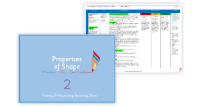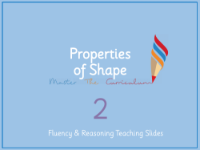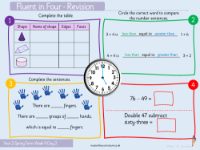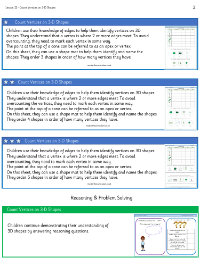Properties of shape - Count vertices on 3D shapes - Planning
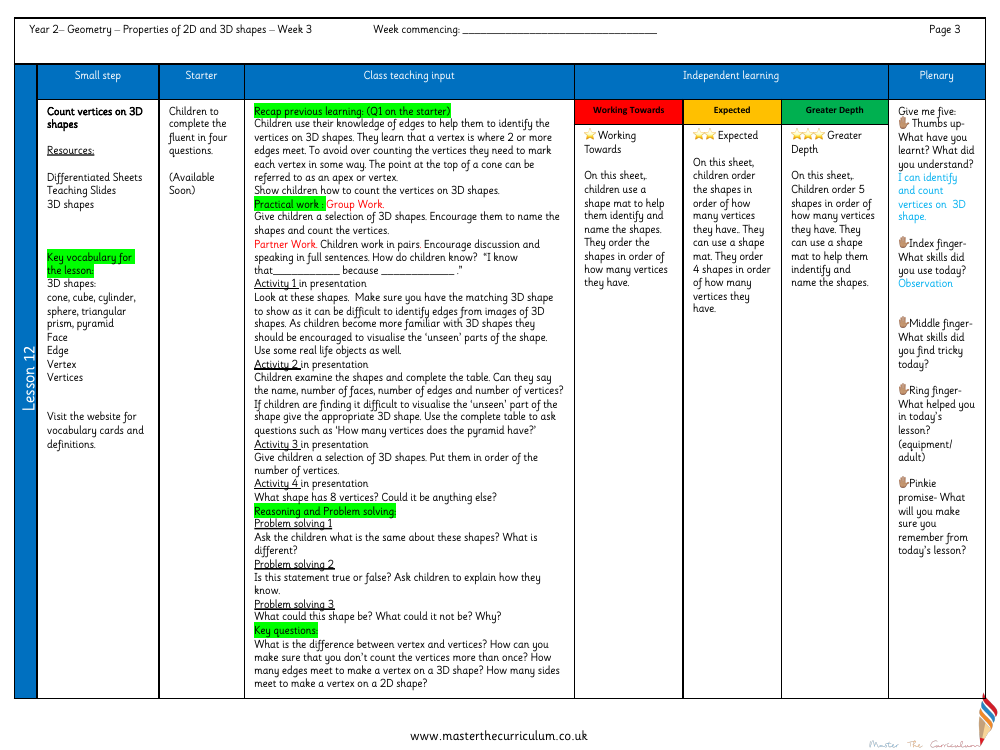
Maths Resource Description
In a Year 2 geometry lesson focused on the properties of 2D and 3D shapes, children are introduced to the concept of vertices on 3D shapes. The lesson begins with a starter activity that leverages the children's existing knowledge of edges to help them identify vertices, which are defined as points where two or more edges meet. To prevent miscounts, children are encouraged to mark each vertex as they count. The class teaching input includes practical work where children are given a variety of 3D shapes to name and count vertices, with an emphasis on using full sentences to explain their reasoning. They are taught that the top point of a cone can be called an apex or vertex, and they practice visualising the unseen parts of shapes, using both 3D objects and real-life examples to aid understanding.
Subsequent activities involve children examining shapes and completing a table with the name, number of faces, edges, and vertices of each shape. They are encouraged to order shapes by the number of vertices and to engage in problem-solving tasks that prompt them to compare shapes, evaluate statements as true or false, and deduce possible shapes from given characteristics. Key questions guide the children to differentiate between 'vertex' and 'vertices' and to understand the geometry of both 3D and 2D shapes. The plenary session uses a "Give me five" strategy to help children reflect on what they have learned, the skills they used, any difficulties encountered, and what they found helpful. Differentiated sheets are provided to support children working towards expected levels and those capable of greater depth, with tasks ranging from identifying and naming shapes to ordering them based on the number of vertices they possess.
